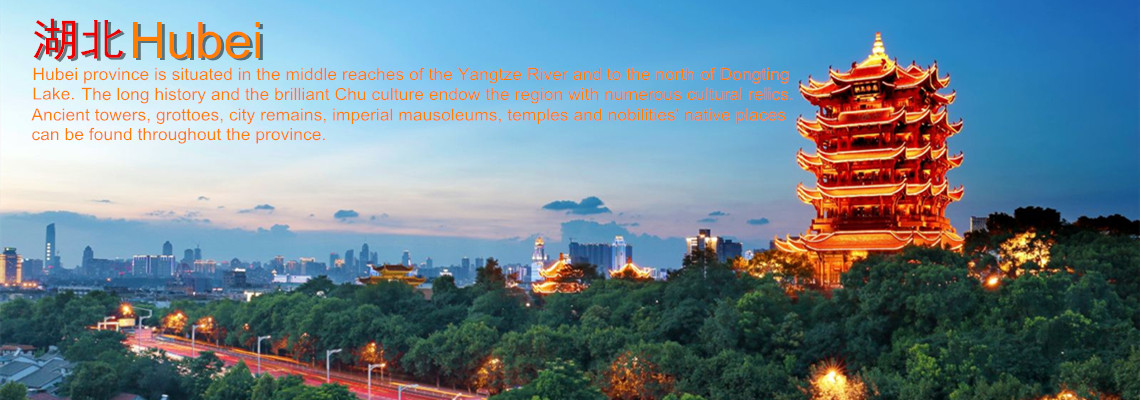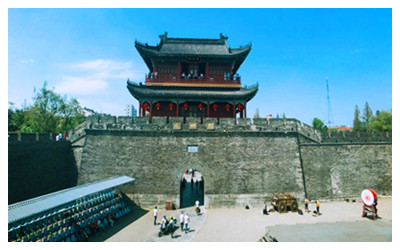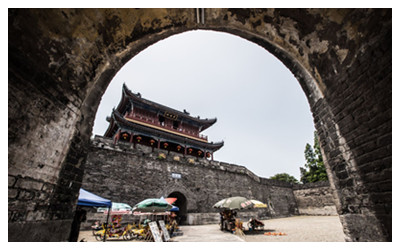Skype: neodalle-travel
Tel: +86 135 7447 2266
E-mail: sales@visitaroundchina.com

 Jingzhou Anicent City was originally one of the birth places of the culture of Chu State in the Spring and Autumn Period (770 BC-476 BC) and Warring State Period (476 BC-220 BC), which left extremely valuable cultural relics from their 400 plus years' reign equally comparable with the ancient Greek and Roman culture. In the Three Kingdom Period (220-589), the city was the focus of many disputes and wars. Since the Eastern Jin Dynasty (317-420), the city had been established as the capital by 11 emperors in all, making it the political centre in China for more than 100 years.
Jingzhou Anicent City was originally one of the birth places of the culture of Chu State in the Spring and Autumn Period (770 BC-476 BC) and Warring State Period (476 BC-220 BC), which left extremely valuable cultural relics from their 400 plus years' reign equally comparable with the ancient Greek and Roman culture. In the Three Kingdom Period (220-589), the city was the focus of many disputes and wars. Since the Eastern Jin Dynasty (317-420), the city had been established as the capital by 11 emperors in all, making it the political centre in China for more than 100 years.
What to see?
Jingzhou Ancient City is divided into three parts from outside to inside - Water City, Brick City and Earth City originally mainly designed for the military function. The moat outside is the first line of protection for the city. There are two city gates as you enter the city, and the space between is called 'Urn City', which was used to catch the enemy inside.
 There were six ancient city gates in the wall, originally each had a tower. Now the most popular are the Binyang Tower (Binyang Lou) on the Eastern Gate, the Qujiang Tower (Qujiang Lou) on the Southern Gate, and Chaozong Tower (Chaozong Lou) on the Large Northern Gate.
There were six ancient city gates in the wall, originally each had a tower. Now the most popular are the Binyang Tower (Binyang Lou) on the Eastern Gate, the Qujiang Tower (Qujiang Lou) on the Southern Gate, and Chaozong Tower (Chaozong Lou) on the Large Northern Gate.Jingzhou City, one of the noted historic and cultural cities in China also called Jiangling City, covers an area of 4.5 k㎡. There are well-protected ancient walls here. The length of Jingzhou city from east to west is 3.75 kilometers, and from north to south, 1.2 kilometers. The city walls, 8.83 meters high, has a perimeter of 11,281 meter. There are six groups of city gate buildings, originally with each gate a tower built.
Jingzhou City originally was divided into three parts from outside to inside: Water City, Brick City and Earth City. It is said that when Guan Yu guarded the city, he met nine fairies flying down to the city who said that they were commanded by the Empress of Heaven to take the city back because there were too many battles. Not willing to lose the city, Guan thought hard and then came to an idea. So he said to them, “Let’s compete. The winner will be the owner of the City. We separately build a city of 5,000 steps in circumference. The one who completes first is the winner. You build it in the northwest and I build it in the southeast. We start when night falls and stop at the crow of roosters.
The fairies agreed. They got earth with their robes to build the city, while Guan Yu built the city with reeds. When Guan completed his city, the fairies had not. But time was not up. So Guan shook the chicken coop and then roosters crowed. The nine fairies went back ashamedly. This is the legendary of the Nine Fairies Statue in the outer of the north gateway of Jinzhou. It is also said that Zhang Fei also shouldered earth to help his brother, but he was late. So he poured the earth outside of the east gateway, hence the Mound is also called 'Zhang Fei's load of Earth'.
 Ask Questions ?
Ask Questions ?